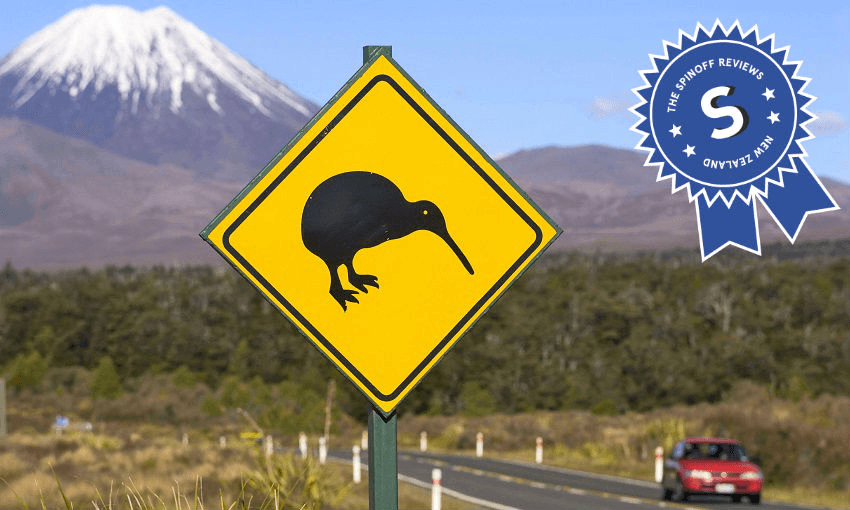We review the entire country and culture of New Zealand, one thing at a time. Today, Hayden Donnell reviews all New Zealand roads after driving 2500km in four days.
The route over Takaka Hill is less a road than a rickety goat track hewn into the side of a mountain. It’s afflicted by slips and random rockfalls; pockmarked with hairpin turns and sheer cliffs. The safest speed to drive on it is about -4km/hr. Its actual speed limit: 100km/h.
I drove the route recently as part of a poorly thought-out 2500km-in-four-day musical tour. As I crunched over fallen tree branches in the rainy pre-dawn dark near upper Takaka, it struck me that the speed signs on Takaka Hill may as well read “literal suicide”. Drivers being scraped out of their seats by paramedics would at least have the comfort of knowing they’d followed the letter of the law on their way to the bottom of a ravine.
The Takaka Hill wasn’t alone in its recklessly nihilistic approach to road users’ lives. State Highway 6 near Murchison was narrow and wet. 100km/h. State Highway 7 on the way to Amberly was hilly and windy. 100km/h. Old Taupo Rd in a cyclone was one of the most stressful experiences of my life. 80km/h maybe? I was trying not to die.
Every road outside of the main motorways seemed to be governed by a mad engineer with a taste for human suffering. The speed limits were implausibly high. The safety measures, few.
It shows in our road toll. I only started noticing the white crosses when I was on the home stretch, travelling back from Wellington. One after the other, dotted every regularly for hundreds of kilometres on end. Our roads are a long, winding cemetery spreading the breadth of the country; a macabre spectacle of death and grief plonked in between the bakeries and petrol stations.
More than 200 people have died on the roads this year alone. The toll has averaged 371 per year for the last 10 years. If two passenger jets crashed into New Plymouth every year, we would be concerned. Billions would be spent to stop the carnage. Deaths on our roads are just something we accept as a fact of life.
Authorities have often blamed driver stupidity for the predictable yearly devastation, implying little can be done. We simply have to wait until humans are no longer stupid, drunk, tired, or distracted, they sigh wearily. But human stupidity is one of our most certain and measurable constants. Trace elements of human stupidity will be found in the superheated remains of the Universe. We should mitigate its effects.
Transport Minister Phil Twyford started making those efforts recently, ordering $800 million in urgent road safety improvements. Just putting in things like median barriers on high-crash stretches of road is expected to save about 160 lives per year. The statistical cost of life is currently at $4.2 million, meaning the increased safety measures could save more than $20 billion over 30 years, which will be very compelling to at least one headline writer.
It will also save lives, humanly. Every one of those 160 lives is a person who won’t leave behind a grieving family after hooning off a horribly designed stretch of road near Masterton.
It begs the question: why didn’t we do this earlier? According to a recent report commissioned by the Ministry of Transport, it may be because our politicians never really cared enough. “There was not a strong political champion for road safety,” the report says, in what should be a indictment of the work of both former transport minister Simon Bridges and former police minister Paula Bennett. Our ACC levy was reduced in 2015 when it could’ve been spent on safety improvements. Lanes could’ve been separated. Speed limits on roads like the Takaka Hill could’ve been reduced. None of that happened and at least dozens, but probably hundreds, of people are likely to have died unnecessarily as a result, to our great and enduring shame.
There’s a lot of nice scenery on the roadsides though.
Verdict: Expensive death traps situated next to fields and trees.
Good or bad: Bad
The Bulletin is The Spinoff’s acclaimed, free daily curated digest of all the most important stories from around New Zealand delivered directly to your inbox each morning.

